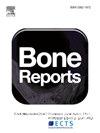Artificial intelligence in pediatric osteopenia diagnosis: evaluating deep network classification and model interpretability using wrist X-rays
IF 2.6
Q3 ENDOCRINOLOGY & METABOLISM
引用次数: 0
Abstract
Osteopenia is a bone disorder that causes low bone density and affects millions of people worldwide. Diagnosis of this condition is commonly achieved through clinical assessment of bone mineral density (BMD). State of the art machine learning (ML) techniques, such as convolutional neural networks (CNNs) and transformer models, have gained increasing popularity in medicine. In this work, we employ six deep networks for osteopenia vs. healthy bone classification using X-ray imaging from the pediatric wrist dataset GRAZPEDWRI-DX. We apply two explainable AI techniques to analyze and interpret visual explanations for network decisions. Experimental results show that deep networks are able to effectively learn osteopenic and healthy bone features, achieving high classification accuracy rates. Among the six evaluated networks, DenseNet201 with transfer learning yielded the top classification accuracy at 95.2 %. Furthermore, visual explanations of CNN decisions provide valuable insight into the blackbox inner workings and present interpretable results. Our evaluation of deep network classification results highlights their capability to accurately differentiate between osteopenic and healthy bones in pediatric wrist X-rays. The combination of high classification accuracy and interpretable visual explanations underscores the promise of incorporating machine learning techniques into clinical workflows for the early and accurate diagnosis of osteopenia.

人工智能在儿童骨量减少诊断中的应用:利用腕部x光评估深度网络分类和模型可解释性
骨质疏松症是一种导致骨密度低的骨骼疾病,影响着全世界数百万人。这种情况的诊断通常通过临床评估骨矿物质密度(BMD)来实现。最先进的机器学习(ML)技术,如卷积神经网络(cnn)和变压器模型,在医学上越来越受欢迎。在这项工作中,我们使用来自儿童手腕数据集GRAZPEDWRI-DX的x射线成像,采用六个深度网络进行骨质减少与健康骨骼分类。我们应用两种可解释的人工智能技术来分析和解释网络决策的视觉解释。实验结果表明,深度网络能够有效地学习到骨质减少和健康骨骼的特征,实现了较高的分类准确率。在六个被评估的网络中,带有迁移学习的DenseNet201的分类准确率最高,达到95.2%。此外,CNN决策的可视化解释提供了对黑箱内部工作原理的有价值的见解,并提供了可解释的结果。我们对深度网络分类结果的评估强调了他们在儿童手腕x光片中准确区分骨质减少和健康骨骼的能力。高分类准确性和可解释的视觉解释的结合强调了将机器学习技术纳入临床工作流程以早期准确诊断骨质减少的前景。
本文章由计算机程序翻译,如有差异,请以英文原文为准。
求助全文
约1分钟内获得全文
求助全文
来源期刊

Bone Reports
Medicine-Orthopedics and Sports Medicine
CiteScore
4.30
自引率
4.00%
发文量
444
审稿时长
57 days
期刊介绍:
Bone Reports is an interdisciplinary forum for the rapid publication of Original Research Articles and Case Reports across basic, translational and clinical aspects of bone and mineral metabolism. The journal publishes papers that are scientifically sound, with the peer review process focused principally on verifying sound methodologies, and correct data analysis and interpretation. We welcome studies either replicating or failing to replicate a previous study, and null findings. We fulfil a critical and current need to enhance research by publishing reproducibility studies and null findings.
 求助内容:
求助内容: 应助结果提醒方式:
应助结果提醒方式:


